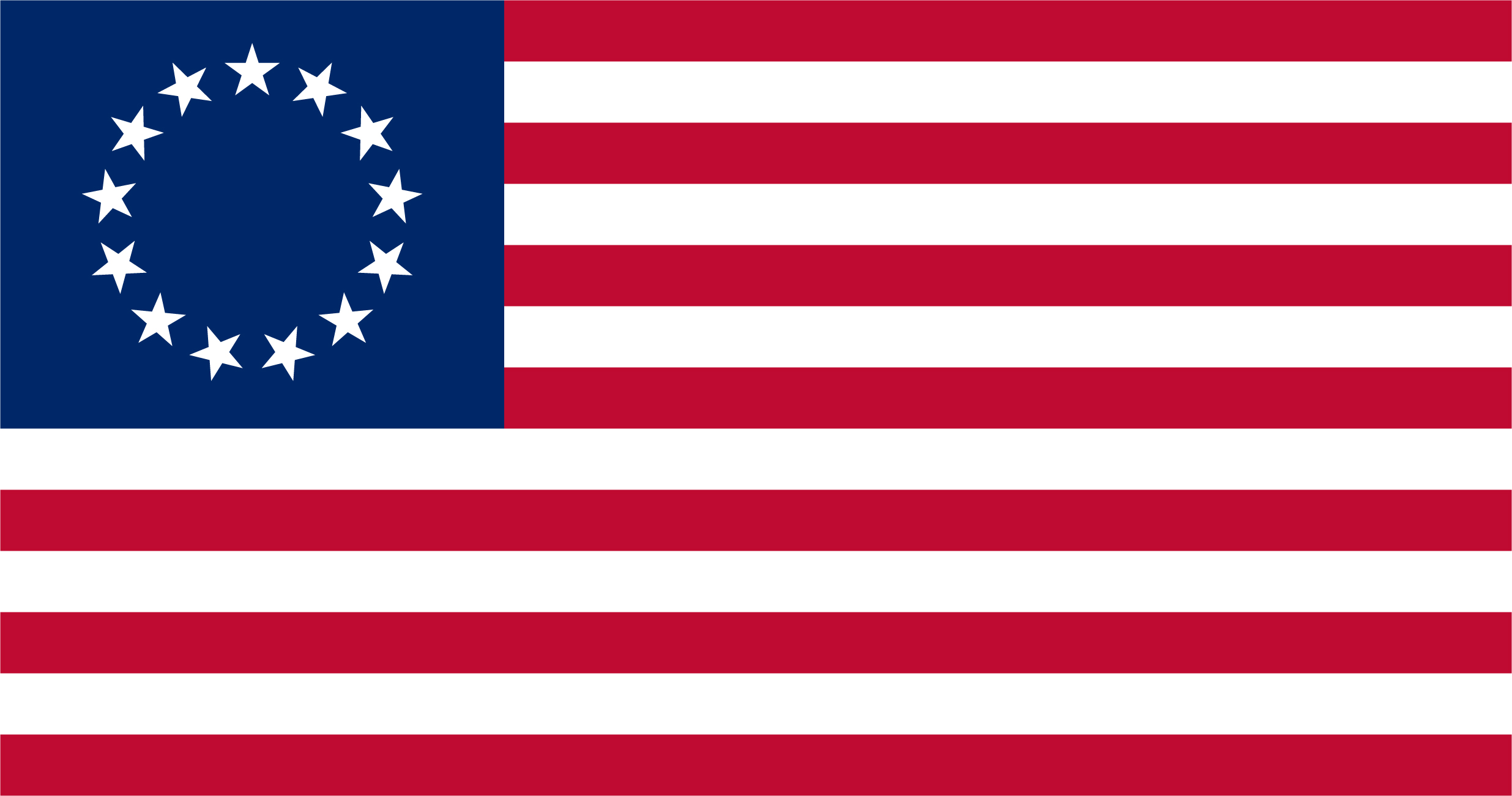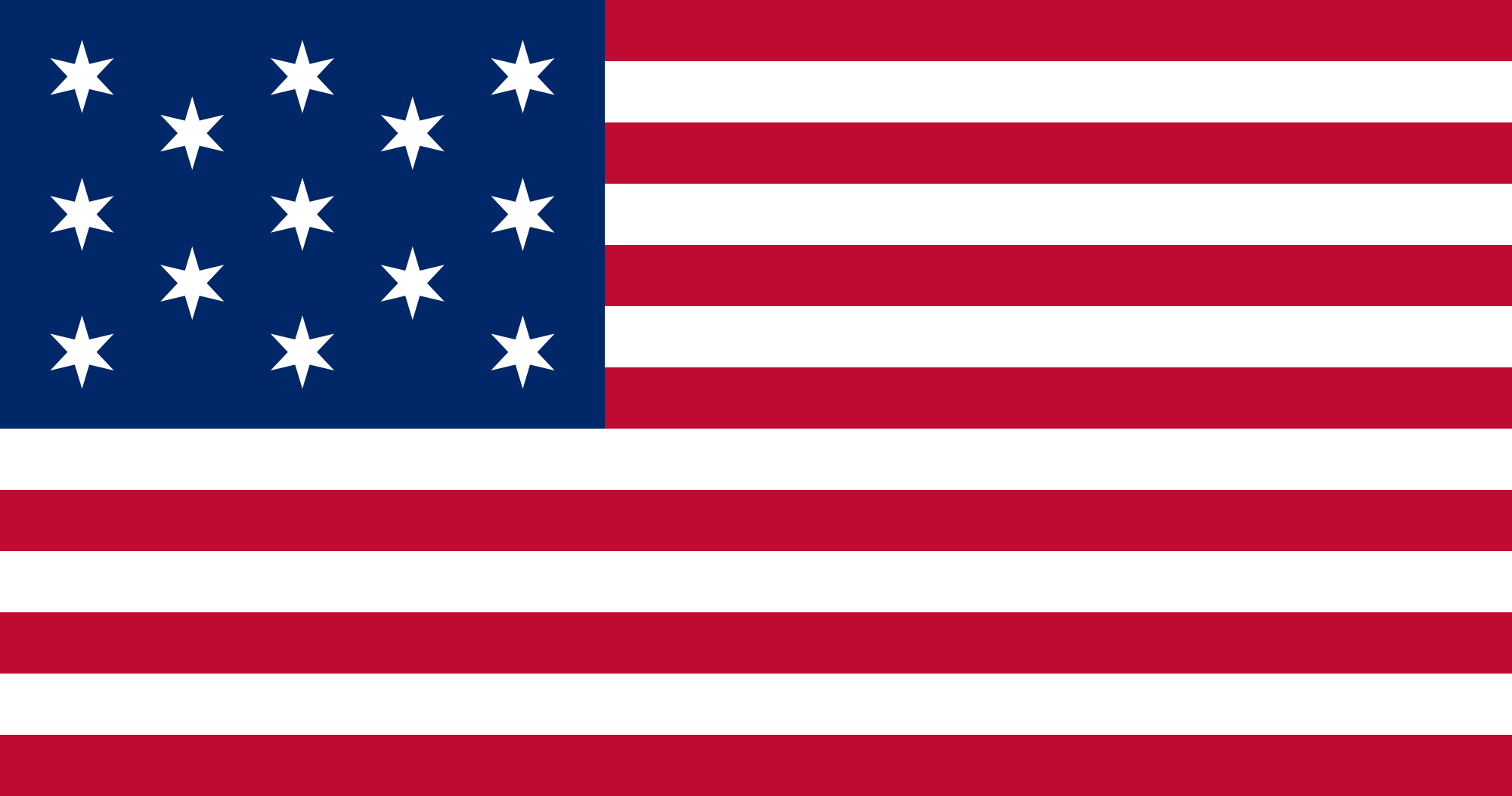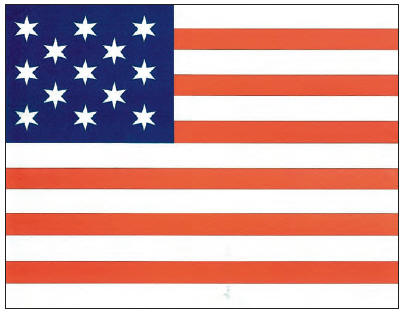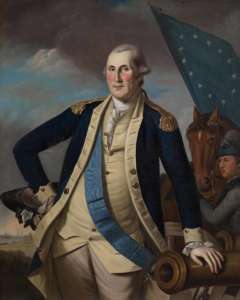The secret history of the flag of the United States
This June 14th is Flag Day, the annual celebration of when we adopted our first national flag, which happened on June 14, 1777: “Resolved. That the flag of the United States be thirteen stripes, alternate red and white; that the union be thirteen stars, white in a blue field, representing a new constellation.”
Of course, everyone knows that Betsy Ross was the patriot who designed our flag, right? Well… not so much.
According to legend, General George Washington himself swung by the house of one Elizabeth Griscom Ross and said, “I say, Besty … think you could whip me up a flag, with some stars, stripes, and maybe an eagle defecating on the head of King George?’” OK, so we’re making up that bit about the eagle, but that’s the legend that Betsy Ross’ grandson, William J. Canby presented at the Centennial Exposition in Philadelphia in 1876, and that’s the legend that has been lodged in the public’s imagination—and the history books—ever since.
According to Smithsonian Institution experts on the subject, this legend took off because it’s a story that appealed to Americans who wanted to promote female Revolutionary figures.
And not only didn’t Betsy Ross design the first flag, the flag that we normally associate with her, pictured below, may never have existed!

OK, so the question is: If Betsy Ross didn’t design the first U. S. flag, then who did? Answer: Francis Hopkinson.
Francis who?
Francis Hopkinson (1737-1791) was perhaps the coolest Founding Father you’ve never heard of. He was an author, artist, composer, concert harpsichordist, lawyer, delegate to the Continental Congress (from New Jersey), signer of the Declaration of Independence, chairman of the Navy Board, and a federal district judge. Oh, and he was also a designer. He designed the first U. S. coin, Continental paper money, provided sketches for the Great Seal of the United States, and … in his spare time, he also designed our flag.
While no sketch of Hopkinson’s flag survives, it appears that he is responsible for this design:

(Note the six-pointed stars, which were favored by Washington.)
In fact, this design was referred to by Hopkinson as the flag for the United States Navy, which was really the only place flags were used back then. Frankly, the only reason we needed flags in the first place was so American ships could identify other American ships. The Army didn’t regularly carry flags into battle the way it is often portrayed in paintings and in movies. Hopkinson apparently submitted two designs, this one for the Navy, and a slightly different design for the country’s flag, with the red and white stripes reversed (see below), but it was his naval design that won out.

So, why do we think Hopkinson designed the flag? Because the journals of the Continental Congress say he did. And also because he used his flag design in his sketches for the Great Seal of the United States (which uses the same stripe pattern as Hopkinson’s non-naval flag, with the white stripes on the outside).
By the way, the payment Hopkinson wanted for all that design work? A quarter-cask of wine.
He was never paid.
OK, so how about the claim that Betsy Ross’ circle design never existed? The thing is, no actual “Ross” flags from that time exist anywhere. Only three 13-star flags that were made in the 18th Century are still in existence, though none of them feature the stars in a circle.
The only place we see the circle design in contemporary use is in Colonial currency and paintings, like this one of George Washington by Charles Wilson Peale (c. 1779-1780).

And there is reason to believe this painting is not accurate. First of all, this is a painting of Washington at the Battle of Princeton, which happened on January 3, 1777—six months before the June 14, 1777 Flag Resolution was passed by Congress. And, you’ll notice that it’s hard to tell if there are any stripes in that painting. And second, Peale reused this image of Washington in another painting, this one at the Battle of Trenton. So, he was keen on changing up details.
Other paintings from that era show different star designs, so it’s clear that there was no standard way to organize the stars in the blue field. In fact, that wouldn’t become standardized until 1912.
Betsy Ross herself never claimed to have designed the flag, though it seems she is the one responsible for the stars having five points instead of six, because it was easier for her to sew.
No matter who designed the flag, I think we can all agree that it’s a fantastic design.
Written by: Scott McCormick
